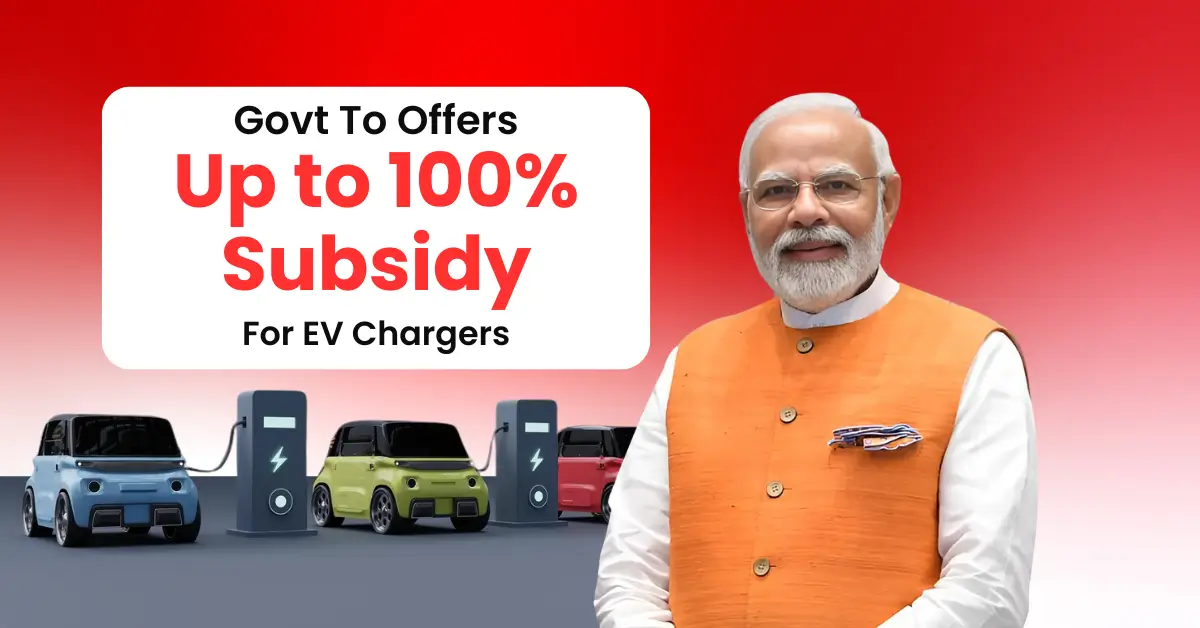
These guidelines are released to promote the faster adoption of EVs and their charging infrastructure in the country.
This subsidy will be provided under the Rs 2,000 crore PM E-Drive Scheme, which has been issued in place of the FAME subsidies for faster adoption of electric vehicles.
The PM E-DRIVE scheme will offer financial support for the development of charging infrastructure providing up to 80% subsidy on upstream infrastructure required for setting up EV charging stations. However, in certain cases it may even provide a 100 percent subsidy, covering upstream power infrastructure as well.
Upstream infrastructure refers to the procedure of installation and setting up of charging stations.
Additionally, the Centre has identified 40 cities with a high concentration of electric vehicles and put out a strategy to prioritize setting up the charging infrastructure in these areas.
The PM E-DRIVE will support EV charging infrastructure for all major EV segments, including electric 2W, electric 3W, electric 4W, electric Buses, and electric Trucks.
Under this scheme, 72,300 charging points are planned to promote faster electric vehicle adoption across all major EV segments.
Fast Charging Infrastructure for electric 4W (including ambulances, light passenger vehicles, light commercial vehicles, and light goods vehicles):
The PM E-DRIVE scheme will support setting up 22,100 fast public chargers for the electric 4W segment.
Fast Charging Infrastructure for electric 2W / electric 3W:
The PM E-DRIVE scheme will support the setting up of 48,400 public fast chargers for the electric 2W and electric 3W segments.
Fast Charging Infrastructure for e-Buses / e-Trucks:
The PM E-DRIVE scheme will support the setting up of 1,800 fast chargers for e-buses and e-trucks.
Charging Infrastructure
The charging infrastructure under the PM E-DRIVE scheme must comply with the Ministry of Power’s 2024 guidelines on Installation and Operation of Electric Vehicle Charging Infrastructure.
Charging Capacity
The minimum charging capacity also has been mentioned in the draft guidelines.
Electric two-wheelers and three-wheelers should have a minimum charging capacity of 12 kW. Electric four-wheelers should have a minimum charging capacity of 60 kW and electric buses and trucks should have a minimum charging capacity of 240 kW.
Charging Configuration
The draft guidelines also mentioned the minimum required charging configurations for cities as well as for highways.
In the City, a minimum of one fast charger would be required for electric four-wheelers and two fast chargers would be necessary for electric two and three-wheelers.
For highways, at least one fast charger would be required for e-buses and e-trucks and at least two fast chargers would be necessary for electric four-wheelers.
In an earlier release, the government had also mentioned installing a charging station every 100 km along the highway for e-buses and e-trucks.
| Category | Total Number of Target Cities |
|---|---|
| 40 lakhs Plus Population Cities | 9 |
| 10 lakhs Plus Population Cities | 44 |
| Satellite Towns | Not Specified |
| Capital Cities and Cities from the Special Category States | Not Specified |
| NCAP Cities | 131 |
| Other – (Heritage Places, Tourist, Religious Places) | Not Specified |
Note: The above list is indicative. States or eligible entities may choose to install EV PCS (Electric Vehicle Public Charging Stations) at other locations based on their specific requirements and land availability.
To effectively deploy the EV charging infrastructure across the country, a structured implementation mechanism has been established. It involves the following steps.
Under this scheme, the Ministry of Heavy Industries will give out 30 percent of the subsidy amount after getting the contract. The next 40 percent amount will be given out after the electric fast charging station is installed and the remaining amount will be handed out when the charging station starts charging the electric vehicles successfully.
Click here to download the PM E-DRIVE Scheme Draft PDF.
This post was last modified on January 7, 2025 9:54 am
In a major stride toward sustainable mobility, the Himachal Pradesh Police have incorporated six custom-modified Tata Curvv electric vehicles into…
In India, the automotive and transport industry is undergoing significant changes. This transformation isn't just about improving roads and infrastructure;…
Montra Electric, the clean mobility brand from the prestigious Murugappa Group, has launched the All-New Super Auto, a next-generation electric…
Union Minister Nitin Gadkari (Minister of Road Transport and Highways of India) has once again made a bold statement that’s got…
India’s electric four-wheeler (E4W) market slowed in September 2025, following a record-breaking August, with 15,038 units sold, representing an 18%…
India’s EV market hit 1,04,056 electric two-wheeler sales in September 2025. TVS, Bajaj, and Ather led the chart, while Ola…
This website uses cookies.